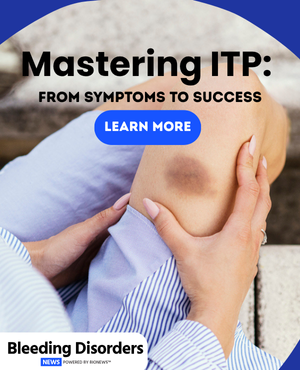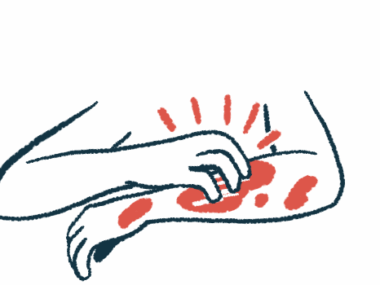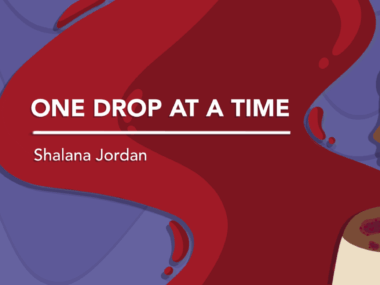Nosebleeds are one of my most annoying symptoms of ITP
While not typically dangerous, they can appear alarming
Written by |

The sickening taste of metal spiraled down the back of my throat. I immediately gagged and ran to the sink to spit out what I could. As soon as I finished, regret washed over me as blood began pouring from my nose. I stretched out my neck to make sure the blood would miss my clothing. “Why do these things always happen to me?” I wondered. “Oh yeah, it’s because I have a rare blood disease.”
In the winter of 2018, I was working in the kitchen of the preschool I owned at the time. I’d recently been diagnosed with a rare blood disease called immune thrombocytopenia (ITP), though I’d been experiencing symptoms of it for years. ITP causes my immune system to attack my platelets, resulting in severe anemia, fatigue, bruising, heavy menstrual cycles, and more.
But on that day at the preschool, I was dealing with another common symptom: nosebleeds.
It’s always funny watching TV shows or movies where someone gets a nosebleed. Characters will say, “Tip your head back,” “Pinch the bridge of the nose,” and so on. But tipping your head back is the last thing you want to do, because all of that blood will go down the back of your throat instead.
I have a strong stomach, but the taste of blood always makes me nauseous. So when I have a nosebleed, I try my best to reduce the amount of blood I swallow. If I get too nauseous, I’ll vomit, which seems to make the nosebleed worse.
‘That’s a lot of blood’
On that day in the preschool kitchen, I was trapped over the sink as blood rapidly streamed from my nose. The bottom of the stainless-steel sink was covered in a layer of bright red. I couldn’t help but think that the color was so vibrant and pretty, even though it was my blood.
The paper towels were just barely out of my reach. So, while keeping my dripping nose over the sink, I slowly inched my left leg outward so I could extend my reach. I stretched as far as my little Tyrannosaurus rex arms would allow, but the roll remained beyond my grasp.
At that moment, my cook stepped into the kitchen and gave me a puzzled look. Relief washed over me. Help had arrived!
“Oh, thank God you’re back. Can you grab me that roll of paper towels? I’m stuck!” I laughed through the silly moment. But my relief was short-lived. As she walked over to me, her eyes darted from my strange posture to my nose and then to the blood-filled sink.
“Jesus Christ, Shay! Are you OK? That’s a lot of blood,” she said, her voice trailing off. Suddenly, her body went limp and she collapsed on the floor. She’d fainted at the sight of so much blood.
I sighed and reached out again, finally grabbing the roll of paper towels. I tore off pieces and shoved them into my left nostril, but had to keep changing them because they were getting saturated with blood.
When the bleeding finally slowed down, I rinsed, scrubbed, and sanitized the sink. I looked down and debated how to wake up my cook. As I stood there, hands on my hips and a wad of paper in one nostril, my assistant came into the kitchen and almost stumbled at the sight.
I explained what had happened, and she helped me wake our cook and get her upright. This wasn’t the first time she’d fainted at the sight of blood, so I wasn’t too worried. When she came to, she immediately asked if I was OK, which was very sweet of her. I explained that it was just a really bad nosebleed from my rare disease.
Frequent nosebleeds can appear alarming, but for me, they typically aren’t dangerous. Sometimes they happen if I bump my nose or blow it too hard, and sometimes they happen for no reason at all. It’s one of the more annoying symptoms of ITP, but it’s easier to deal with than many others.
Note: Bleeding Disorders News is strictly a news and information website about the syndrome. It does not provide medical advice, diagnosis, or treatment. This content is not intended to be a substitute for professional medical advice, diagnosis, or treatment. Always seek the advice of your physician or other qualified health provider with any questions you may have regarding a medical condition. Never disregard professional medical advice or delay in seeking it because of something you have read on this website. The opinions expressed in this column are not those of Bleeding Disorders News or its parent company, Bionews, and are intended to spark discussion about issues pertaining to bleeding disorders.







